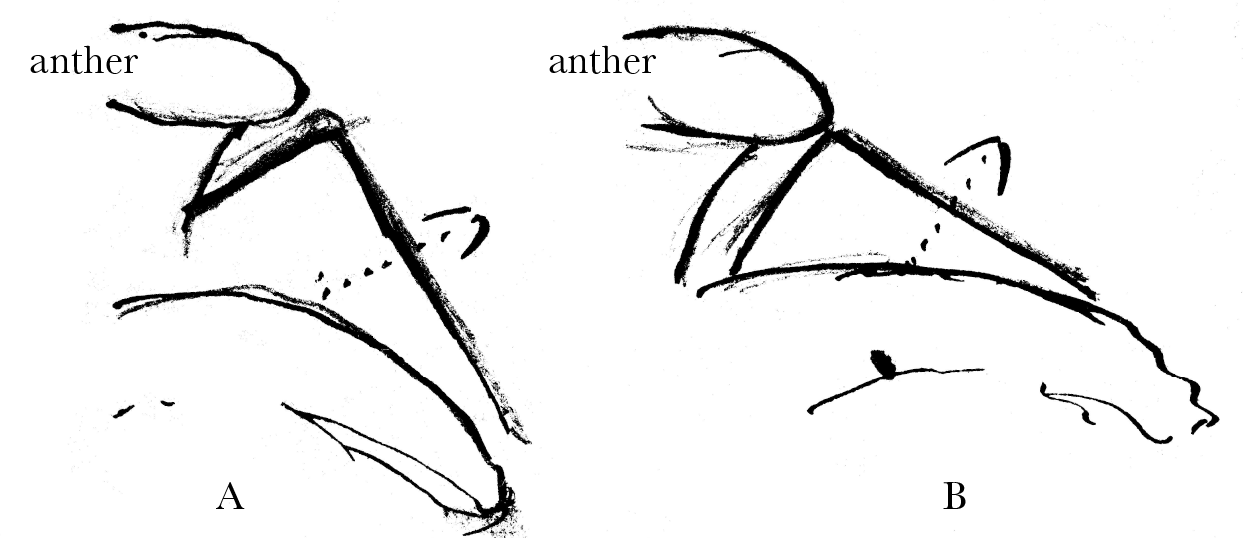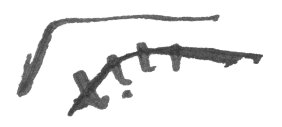From W. E. Darwin 12 July 1869
Bank, Southampton,
July 12 1869
My dear Father,
I send some Epipactis by post.1
I have not time to write particulars.
I have seen bees visit about 14 to 20 flowers, and have caught one with pollen about root of trunk. I did not see one actually withdraw pollen.
When a bee alights on a fully open flower it rests in a more sloping position from the lip sinking more than in case of a flower just at perfection
the bee remains quite outside the flower & pushes his head in till the top of the Anther just rests between the antennæ, and keeps boring its proboscis down with a jogging motion. A shows the angle of trunk & body of bee sucking an open flower B a perfect flower.

I am tolerably sure (but it is most difficult to be quite so) that in case of bee sucking as at B that it flew off in rather more vertical a direction than in A. see dotted line & in each case whether open or not the lip flew up and appeared to hit the bee on the belly, and in one or two cases of perfect flowers the bees appeared to fling themselves off with a quick jerk kicking out with their legs.2
I found that bending a rush point
 and passing down under Anthers, and bringing it out with a jerk
I very often drew out the pollin
and passing down under Anthers, and bringing it out with a jerk
I very often drew out the pollin
I send you the Epipactis in case you want to try any more as to withdrawing pollen. I will tell the rest when I come on Thursday.3
Your affect son | W.E.D
CD annotations
Footnotes
Bibliography
Orchids 2d ed.: The various contrivances by which orchids are fertilised by insects. By Charles Darwin. 2d edition, revised. London: John Murray. 1877.
Summary
Bees visiting Epipactis.
Letter details
- Letter no.
- DCP-LETT-6826
- From
- William Erasmus Darwin
- To
- Charles Robert Darwin
- Sent from
- Southampton
- Source of text
- DAR 162: 101
- Physical description
- ALS 5pp †
Please cite as
Darwin Correspondence Project, “Letter no. 6826,” accessed on 19 April 2024, https://www.darwinproject.ac.uk/letter/?docId=letters/DCP-LETT-6826.xml
Also published in The Correspondence of Charles Darwin, vol. 17


